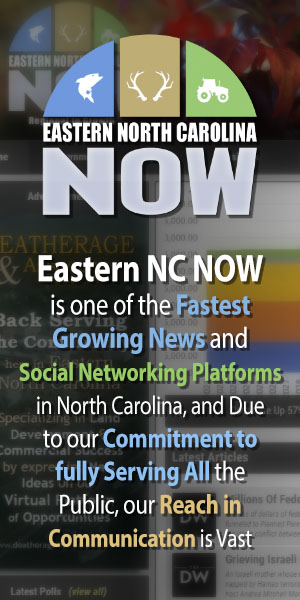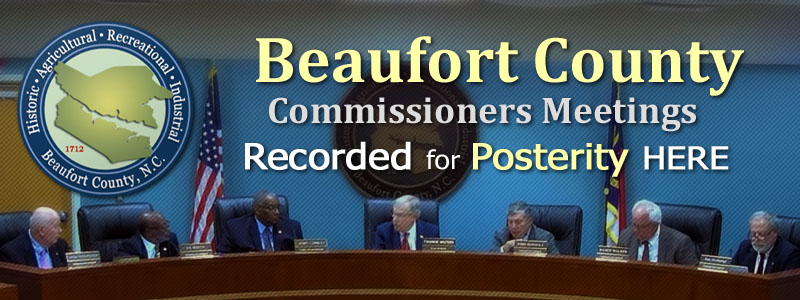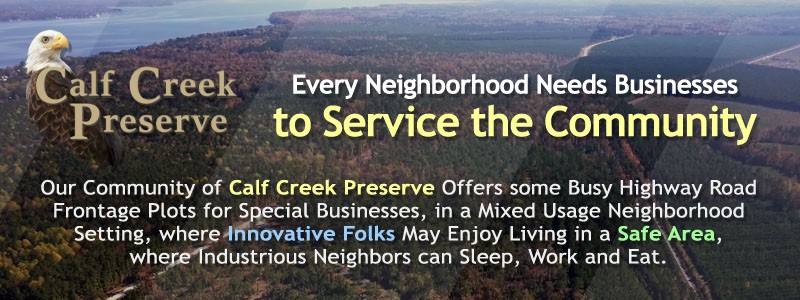Your Basic Needs: Food, Shelter and The TRUTH
An Interview with the New NCCCS President
Publisher's Note: This post appears here courtesy of The James G. Martin Center. The author of this post is Shannon Watkins.
The North Carolina Community College System (NCCCS) has named, once again, a new president. Three years ago, the NCCCS said goodbye to President Peter Hans when he accepted the role of president of the University of North Carolina System. Since then, the community college system has named two presidents. In December 2020, Thomas Stith was chosen as Hans's successor. His tenure, however, did not last; less than two years after being appointed, Stith resigned in July 2022.
In April, the State Board of Community Colleges selected Jeff Cox to be the community college system's 11th president. Before starting his new role, Cox served as president of Wilkes Community College since 2014. He also led Alleghany County Schools as superintendent from 2005 to 2014. Since 2022, he has served as head of the North Carolina Community College Presidents' Association. With all his roles considered together, Cox brings three decades of education experience to his new position.
Earlier this month, Cox spoke with the Martin Center about his vision and goals for the community college system. The following transcript has been edited for clarity and length.
Martin Center: What are your top priorities for your first year as NCCCS president? How do you think your experience as a community college president and superintendent will inform your new role?
Jeff Cox: Great question to get started. We've had a fair amount of turnover here in the senior leadership role at the system office, both with the president's role, but also with the senior leadership team. The first order of business here for the first couple of months has really been and will continue to be building back up our senior leadership team with some high-quality individuals who bring a wealth of experience and knowledge into these roles. We're hard at work on doing that work, we have filled three out of four really high-level positions already and have one more, which we hope to take to the board next week. So that'll kind of wrap up having our senior team all back together again, ready to move forward.
Beyond that, the state board and I have been collaborating right from the beginning on developing some goals for the next year and setting the path for the next three years. But the top item that's on everybody's mind is on meeting our state's emerging workforce needs. Our state's been declared by different entities as the number-one state in the country for business. We were last year, and we just received word this week that we've been named that again this year. And that's a fantastic accolade for our state.
But we believe strongly that if we don't become the number-one state in the country for the workforce talent pipeline, we're gonna have a hard time staying number one in the state for business. All of these businesses and industries that are expanding their operations, setting up shop here in North Carolina, are bringing in thousands and thousands of jobs. Almost all these jobs require some sort of post-secondary credential. Most of them are not four-year degrees, or master's degrees, or higher-level degrees, but almost all of them require some sort of post-secondary degree. This is the heart of what the community colleges do across our great state. We're in every community across the state, we're within a 30-minute drive to any potential student, but also to every potential business or industry looking for a partner to help them meet their workforce talent pipeline. That's job [number] one: What do we have to do to really make sure that, for business and industry, we're supplying them with the workers they're going to need to do the high-skill work that they need to have done?
And then our prospective students. We think about all the people across our great state who are symbolic of our student population, they may be first-generation college students, they may not have had any background with higher education. Many of them are living with economic challenges. We want to provide those individuals with opportunities to have access to higher education, and to those jobs that pay a living wage. A lot of that can be done through very short-term credential programs. That is really the top priority going forward, and all the things that it entails, one of which would be taking a fresh look at how our community colleges are funded: looking at what parts of the funding formula are serving us well and what parts of it are making it more challenging for us to be as well-resourced as we need to be to meet the needs of business and industry and the whole population of students we serve.
Martin Center: We've seen that measuring student success in terms of graduation rates doesn't provide the full picture of what community college has to offer. What's a better way to measure the success of North Carolina's community colleges?
Cox: That is a complicated question for sure. It's hard to put it into a specific metric. What does the individual student want when he or she comes to the community college? For some of them, it's to complete the full two-year associate's degree within two or three years and graduate, and go on to either work or transfer to a university. For others, it may be coming to the community college just to get a particular class, before transitioning on to a university. Or maybe just picking up a workforce credential or skill and going out and getting a better job. Tying our success to the success of our individual students is something that we're trying to think through and think how to measure effectively. Our performance measures don't always capture all the nuances of what we do.
A student who comes to one of our community colleges, stays for a semester, picks up a welding credential but then drops out before he officially finishes the diploma and goes to work somewhere making $20 an hour as a welder-is that a success or failure? If you ask the student, it's a success if he's gotten a skill and now he's making $20 an hour instead of the $10 an hour he was making at a fast-food restaurant. How we measure success depends on the value for students.
About half of our students are on the college transfer pathway, planning to get two-year degrees and transfer to a four-year university. But a little more than half are more tuned in to the workforce side of our operation. And for many of those [students], it may be a short-term credential that they're trying to achieve. The graduation rates don't really reflect all those workforce students. We're looking at a mechanism on how we can keep a count of how many credentials of value were awarded and have some meaning out in business and industry. That's one additional measure that we're reviewing to see how we can capture all the good work we're doing with getting students the credentials they need to go out and earn a living wage.
Martin Center: Enrollments have been impacted at many colleges due to the pandemic. And the pool of college students is expected to dramatically shrink due to the decline in college-aged students. How does the system plan to respond to these challenges? Are there any plans to consolidate under-enrolled colleges?
Cox: That's a question that we hear periodically, and Covid has been tough with enrollment. We obviously had a precipitous decline during the height of the Covid pandemic. Enrollments are growing again, but there are some challenges with the overall school-aged population, in particular in some of our rural communities. We're looking ahead to that. But there are opportunities, particularly in some of these short-term credential programs. The degrees that are required are not necessarily going to be those higher-level degrees, but more short-term credentials. We've got a significant part of our high-school-age population across the state that is not going anywhere after high school. Across different communities, that number varies from probably in the high 20 percent to over 50 percent of the high-school population who aren't pursuing any kind of post-secondary credential. If you look at that target population, how many of those students are going to be able to get great jobs paying high salaries without any kind of education beyond high school? It's a small number. The key to prosperity is education. Even though the number of graduating seniors may be shrinking, there's a huge population of students who we're not yet serving, who I think are our target demographic.
We have to figure out a way to get connected with that 30 or 40 or 50 percent of high-school seniors who are graduating and not going anywhere or to college. We have programs for them, some of them very short-term programs. Just in a few weeks or months, we can give them a credential that'll allow them to go out and make a living wage. We have to do a better job of marketing to those students and helping them and their parents understand higher education is attainable, it is accessible through our community college system. We've got a college somewhere within 30 minutes of where they live. And we can get them a certificate or credential that's going to have value for them in the labor market if they'll just come and attend. That is definitely part of the equation.
The other part is shifting our focus a little bit more strongly to adult learners. We have a lot of adults who are out in the economy working jobs, many of them under-employed in jobs that are not paying a living wage yet. We're being more and more creative about how we connect with them in a way that they can still work, come back to us part-time, and earn those credentials that are all going to allow them to have a better salary and be able to better support their families. The John M. Belk Endowment has been very supportive of our community college system in launching NC Reconnect-reaching out to those adult learners who started with the community college system, but then stopped and never completed the degree or credential. We're inviting those students back to say, "We're going to work with you, get you back in, and help you complete that credential so you can go out and make a good living."
Martin Center: Community colleges play an important role in workforce development. Are there any plans to expand apprenticeship opportunities and improve career and technical education?
Cox: Yes, absolutely. Those are key areas for us as well. The General Assembly has awarded some state apprenticeship expansion funds designed to help us expand apprenticeships across the state, specifically targeting small to medium-sized businesses in rural North Carolina. We're looking at developing apprenticeship programs that generate more high-demand occupations like healthcare, education, IT, advanced manufacturing, and more. There are some added incentives within that funding stream for apprenticeship sponsors to use their local community colleges to provide related instruction and technical education. While the students are there doing their apprenticeship or other work, they're also taking classes through the local community college. We are working to expand those programs. Specifically, we're trying to do a better job of attracting more females and minorities into our registered apprenticeship programs; we don't have enough diversity of either gender or race within those programs. Both of those we think are real target opportunities for us to expand what we're doing there.
Martin Center: Tell us a little bit about industry credentials. What's the community colleges' relationship like with the industries that are part of this credentialing system?
Cox: This is really one of the strengths of our community college system. You think about all 58 community colleges that are really anchored in those communities across the state, they work hand in hand with industry to, number one, make sure that we understand what are the credentials that industries and businesses value. And then once we know what credentials they value, [we] work with them to make sure we're providing the talent pipeline that they need. Sometimes that's working with students, even while they're still in high school, but it can be even with their own employees, sometimes they're doing training with their workers that are already there. We work with business and industry, everybody from high-school students to the incumbent workforce. With our apprentice program, the apprentices who complete a registered apprenticeship program are all going to receive at least two credentials. The first is from the state of North Carolina, that's the North Carolina state apprenticeship certificate. And the second comes from the U.S. Department of Labor. This is the journeyworker credential, and it is recognized in all 50 states. It gives these students credentials that they can actually use and go out into different companies and have something that they can demonstrate that they've completed that program.
Go Back
The North Carolina Community College System (NCCCS) has named, once again, a new president. Three years ago, the NCCCS said goodbye to President Peter Hans when he accepted the role of president of the University of North Carolina System. Since then, the community college system has named two presidents. In December 2020, Thomas Stith was chosen as Hans's successor. His tenure, however, did not last; less than two years after being appointed, Stith resigned in July 2022.
In April, the State Board of Community Colleges selected Jeff Cox to be the community college system's 11th president. Before starting his new role, Cox served as president of Wilkes Community College since 2014. He also led Alleghany County Schools as superintendent from 2005 to 2014. Since 2022, he has served as head of the North Carolina Community College Presidents' Association. With all his roles considered together, Cox brings three decades of education experience to his new position.
Earlier this month, Cox spoke with the Martin Center about his vision and goals for the community college system. The following transcript has been edited for clarity and length.
Martin Center: What are your top priorities for your first year as NCCCS president? How do you think your experience as a community college president and superintendent will inform your new role?
Jeff Cox: Great question to get started. We've had a fair amount of turnover here in the senior leadership role at the system office, both with the president's role, but also with the senior leadership team. The first order of business here for the first couple of months has really been and will continue to be building back up our senior leadership team with some high-quality individuals who bring a wealth of experience and knowledge into these roles. We're hard at work on doing that work, we have filled three out of four really high-level positions already and have one more, which we hope to take to the board next week. So that'll kind of wrap up having our senior team all back together again, ready to move forward.
Beyond that, the state board and I have been collaborating right from the beginning on developing some goals for the next year and setting the path for the next three years. But the top item that's on everybody's mind is on meeting our state's emerging workforce needs. Our state's been declared by different entities as the number-one state in the country for business. We were last year, and we just received word this week that we've been named that again this year. And that's a fantastic accolade for our state.
But we believe strongly that if we don't become the number-one state in the country for the workforce talent pipeline, we're gonna have a hard time staying number one in the state for business. All of these businesses and industries that are expanding their operations, setting up shop here in North Carolina, are bringing in thousands and thousands of jobs. Almost all these jobs require some sort of post-secondary credential. Most of them are not four-year degrees, or master's degrees, or higher-level degrees, but almost all of them require some sort of post-secondary degree. This is the heart of what the community colleges do across our great state. We're in every community across the state, we're within a 30-minute drive to any potential student, but also to every potential business or industry looking for a partner to help them meet their workforce talent pipeline. That's job [number] one: What do we have to do to really make sure that, for business and industry, we're supplying them with the workers they're going to need to do the high-skill work that they need to have done?
And then our prospective students. We think about all the people across our great state who are symbolic of our student population, they may be first-generation college students, they may not have had any background with higher education. Many of them are living with economic challenges. We want to provide those individuals with opportunities to have access to higher education, and to those jobs that pay a living wage. A lot of that can be done through very short-term credential programs. That is really the top priority going forward, and all the things that it entails, one of which would be taking a fresh look at how our community colleges are funded: looking at what parts of the funding formula are serving us well and what parts of it are making it more challenging for us to be as well-resourced as we need to be to meet the needs of business and industry and the whole population of students we serve.
Martin Center: We've seen that measuring student success in terms of graduation rates doesn't provide the full picture of what community college has to offer. What's a better way to measure the success of North Carolina's community colleges?
Cox: That is a complicated question for sure. It's hard to put it into a specific metric. What does the individual student want when he or she comes to the community college? For some of them, it's to complete the full two-year associate's degree within two or three years and graduate, and go on to either work or transfer to a university. For others, it may be coming to the community college just to get a particular class, before transitioning on to a university. Or maybe just picking up a workforce credential or skill and going out and getting a better job. Tying our success to the success of our individual students is something that we're trying to think through and think how to measure effectively. Our performance measures don't always capture all the nuances of what we do.
A student who comes to one of our community colleges, stays for a semester, picks up a welding credential but then drops out before he officially finishes the diploma and goes to work somewhere making $20 an hour as a welder-is that a success or failure? If you ask the student, it's a success if he's gotten a skill and now he's making $20 an hour instead of the $10 an hour he was making at a fast-food restaurant. How we measure success depends on the value for students.
About half of our students are on the college transfer pathway, planning to get two-year degrees and transfer to a four-year university. But a little more than half are more tuned in to the workforce side of our operation. And for many of those [students], it may be a short-term credential that they're trying to achieve. The graduation rates don't really reflect all those workforce students. We're looking at a mechanism on how we can keep a count of how many credentials of value were awarded and have some meaning out in business and industry. That's one additional measure that we're reviewing to see how we can capture all the good work we're doing with getting students the credentials they need to go out and earn a living wage.
Martin Center: Enrollments have been impacted at many colleges due to the pandemic. And the pool of college students is expected to dramatically shrink due to the decline in college-aged students. How does the system plan to respond to these challenges? Are there any plans to consolidate under-enrolled colleges?
Cox: That's a question that we hear periodically, and Covid has been tough with enrollment. We obviously had a precipitous decline during the height of the Covid pandemic. Enrollments are growing again, but there are some challenges with the overall school-aged population, in particular in some of our rural communities. We're looking ahead to that. But there are opportunities, particularly in some of these short-term credential programs. The degrees that are required are not necessarily going to be those higher-level degrees, but more short-term credentials. We've got a significant part of our high-school-age population across the state that is not going anywhere after high school. Across different communities, that number varies from probably in the high 20 percent to over 50 percent of the high-school population who aren't pursuing any kind of post-secondary credential. If you look at that target population, how many of those students are going to be able to get great jobs paying high salaries without any kind of education beyond high school? It's a small number. The key to prosperity is education. Even though the number of graduating seniors may be shrinking, there's a huge population of students who we're not yet serving, who I think are our target demographic.
We have to figure out a way to get connected with that 30 or 40 or 50 percent of high-school seniors who are graduating and not going anywhere or to college. We have programs for them, some of them very short-term programs. Just in a few weeks or months, we can give them a credential that'll allow them to go out and make a living wage. We have to do a better job of marketing to those students and helping them and their parents understand higher education is attainable, it is accessible through our community college system. We've got a college somewhere within 30 minutes of where they live. And we can get them a certificate or credential that's going to have value for them in the labor market if they'll just come and attend. That is definitely part of the equation.
The other part is shifting our focus a little bit more strongly to adult learners. We have a lot of adults who are out in the economy working jobs, many of them under-employed in jobs that are not paying a living wage yet. We're being more and more creative about how we connect with them in a way that they can still work, come back to us part-time, and earn those credentials that are all going to allow them to have a better salary and be able to better support their families. The John M. Belk Endowment has been very supportive of our community college system in launching NC Reconnect-reaching out to those adult learners who started with the community college system, but then stopped and never completed the degree or credential. We're inviting those students back to say, "We're going to work with you, get you back in, and help you complete that credential so you can go out and make a good living."
Martin Center: Community colleges play an important role in workforce development. Are there any plans to expand apprenticeship opportunities and improve career and technical education?
Cox: Yes, absolutely. Those are key areas for us as well. The General Assembly has awarded some state apprenticeship expansion funds designed to help us expand apprenticeships across the state, specifically targeting small to medium-sized businesses in rural North Carolina. We're looking at developing apprenticeship programs that generate more high-demand occupations like healthcare, education, IT, advanced manufacturing, and more. There are some added incentives within that funding stream for apprenticeship sponsors to use their local community colleges to provide related instruction and technical education. While the students are there doing their apprenticeship or other work, they're also taking classes through the local community college. We are working to expand those programs. Specifically, we're trying to do a better job of attracting more females and minorities into our registered apprenticeship programs; we don't have enough diversity of either gender or race within those programs. Both of those we think are real target opportunities for us to expand what we're doing there.
Martin Center: Tell us a little bit about industry credentials. What's the community colleges' relationship like with the industries that are part of this credentialing system?
Cox: This is really one of the strengths of our community college system. You think about all 58 community colleges that are really anchored in those communities across the state, they work hand in hand with industry to, number one, make sure that we understand what are the credentials that industries and businesses value. And then once we know what credentials they value, [we] work with them to make sure we're providing the talent pipeline that they need. Sometimes that's working with students, even while they're still in high school, but it can be even with their own employees, sometimes they're doing training with their workers that are already there. We work with business and industry, everybody from high-school students to the incumbent workforce. With our apprentice program, the apprentices who complete a registered apprenticeship program are all going to receive at least two credentials. The first is from the state of North Carolina, that's the North Carolina state apprenticeship certificate. And the second comes from the U.S. Department of Labor. This is the journeyworker credential, and it is recognized in all 50 states. It gives these students credentials that they can actually use and go out into different companies and have something that they can demonstrate that they've completed that program.

























